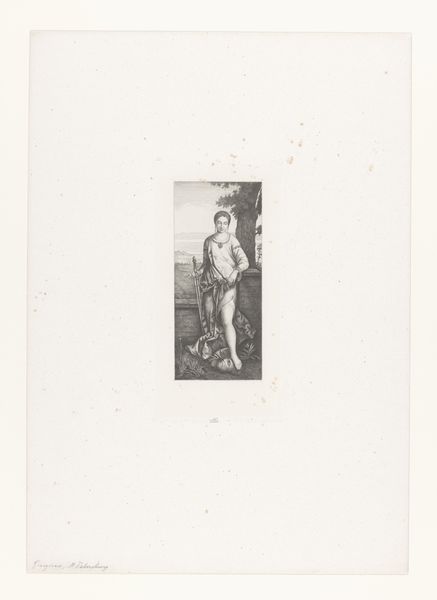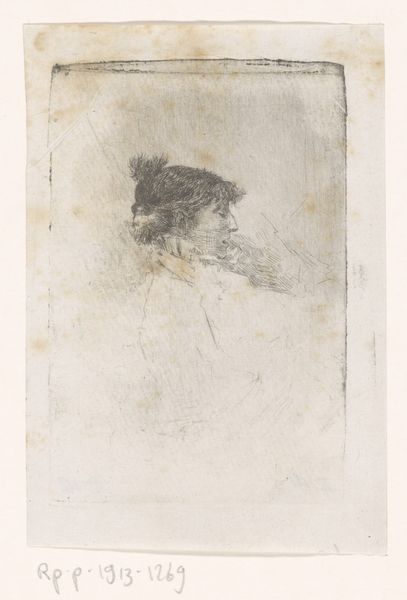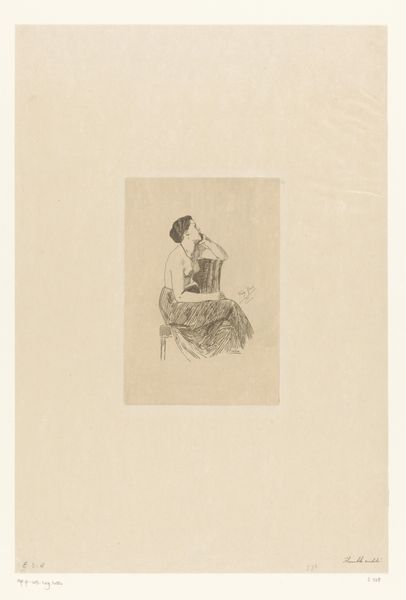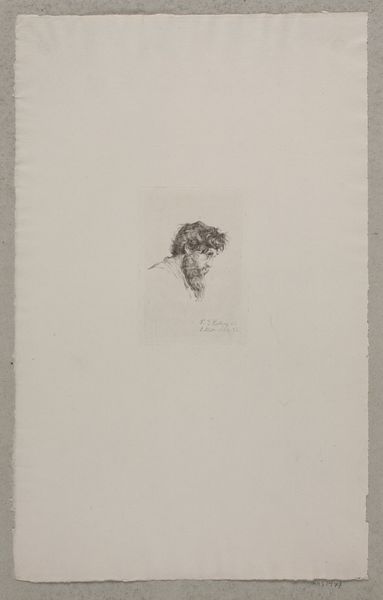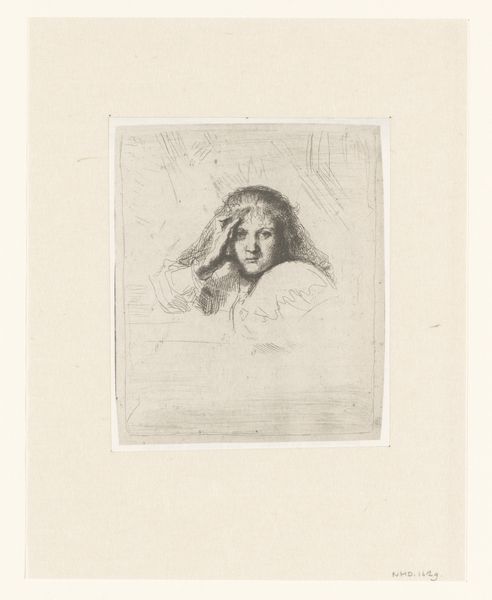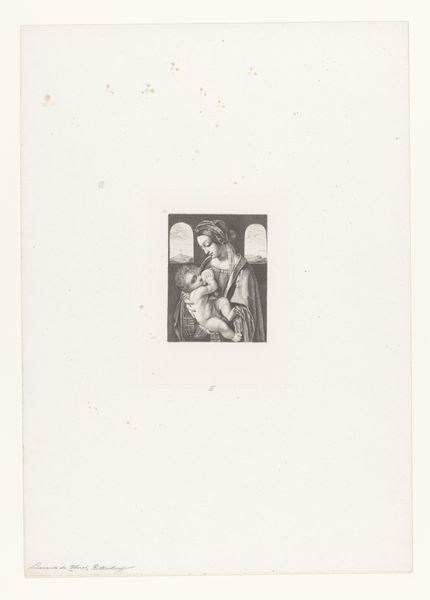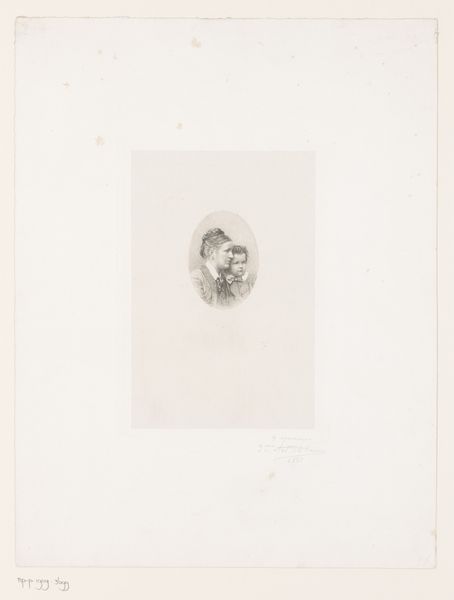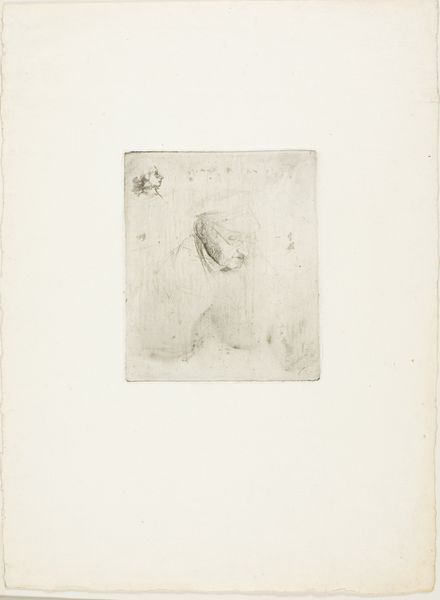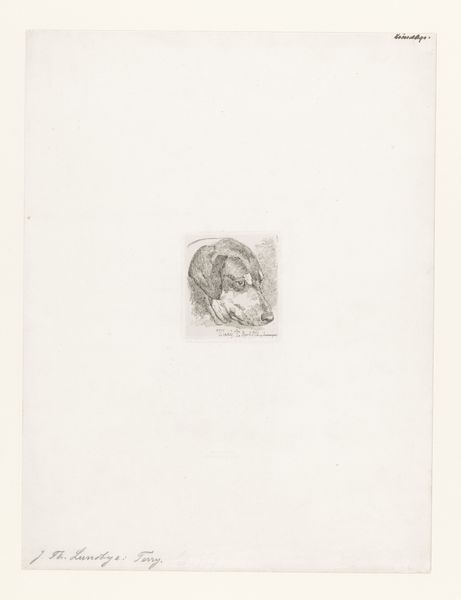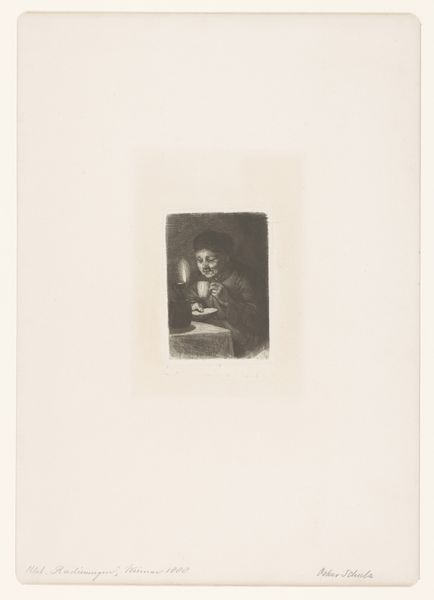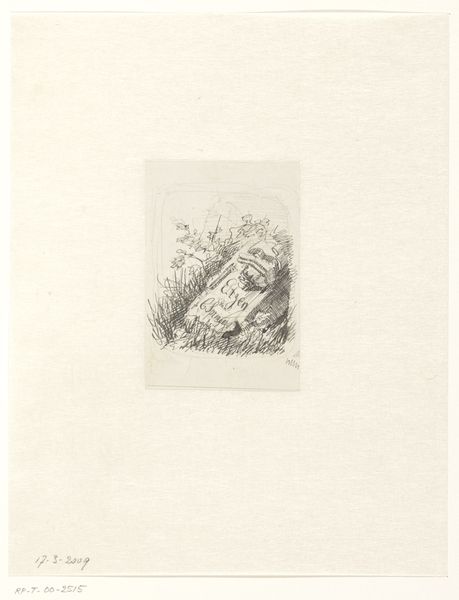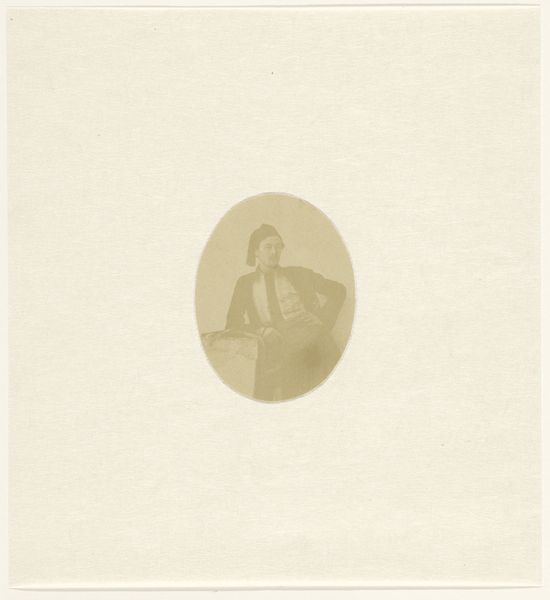
Dimensions: height 162 mm, width 122 mm
Copyright: Rijks Museum: Open Domain
Curator: My first impression is one of profound melancholy. It's a portrait seemingly sketched in shadows, the figure almost fading into the aged paper. It reminds me of those long, lost looks we take in the mirror, trying to place who we've become with who we imagined ourselves to be. Editor: What captures my attention first is how Léopold Flameng chose to portray Dante Alighieri in this engraving. Created between 1841 and 1910, it shows a figure already iconic. Curator: Iconic is a polite way to put it! I feel like he is burdened by this expectation. This intense brow, the almost severe set of the jaw—it suggests not just intellectual heft, but an emotional rawness. He wasn't just a writer, but a human, right? Editor: Indeed, Dante's life was steeped in the political turmoil of Florence. His exile shaped not only his personal experiences but also his poetic vision. To me, the medium reflects the period of Romanticism that shaped the aesthetic sensibility: a period when artists became very interested in conveying deep emotion. Curator: Oh, that’s right. All that 'storm and stress' stuff. And the old engraving style also contributes a particular feel... There’s a tangible sense of looking back to look forward in this portrait; something that is at once immediate and yet filtered through layers of history. That reminds me of writing—my own struggle to convey what I feel in the words on the page. Editor: Well, how the image of Dante has circulated is definitely something to remember. This image would likely have become part of popular 19th-century collections used for moral lessons about culture, patriotism, or something along these lines. That means this artwork has really shaped the historical image of this cultural figure. Curator: Thinking of it like that makes me feel strangely hopeful, imagining his story woven in with ours. Editor: I think so too. Seeing how cultural works impact wider audiences really does impact my thinking about historical transmission and our connections with the past.
Comments
No comments
Be the first to comment and join the conversation on the ultimate creative platform.

